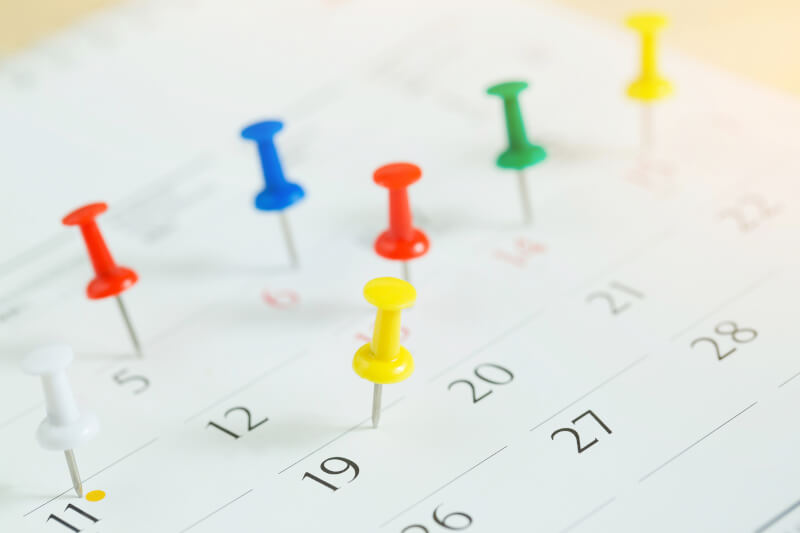A Contact List
The logo of the production company, the address of the production office, and the contact information for the most important people on set (the director, the producer, the first assistant director, etc.) are often located in the upper left corner of a call sheet. This is the first place that actors and crew members would look if they had an urgent need to contact someone.
Production Name and Casting Notice

The production’s name and the standard call time for the entire crew should always appear near the top of the call sheet. This is the right spot to make any noteworthy proclamations you may have.
Time, Days, and Climate Conditions
The date and the day of the shoot (e.g., Day 1 of 10) are typically listed near the top. High and low temperatures, as well as the times of sunrise and sunset, are displayed here as well.
Indicate Location, Parking Information, and Nearby Medical Facilities
Call sheets typically list locations on the top half of the sheet. Label each site with a number (e.g., “Location 1,” “Location 2,” “Location 3,” etc.) if there is more than one.
Since the parking location is frequently different from the filming location, be sure to include it as well. This is where you would include information on transportation options, such as parking, driving directions, and shuttles.
Include the address of the closest hospital to each facility, no matter how big or little they are. Only in the event of a genuine emergency on set will you need to consult the call sheet for this information. Make sure the hospital on your call sheet is a full-service facility, not just a walk-in clinic.
Timetable for Each Day of Filming

The bulk of a call sheet then focuses on the day’s actual objectives. In most cases, the following details will be included with each scene:
- The Act and Scene Number Title Page from the Script
- Scene notes (including important props, stunts, and pre-production work)
- The Scene, Day or Night
- Character Identifiers for Cast Members Who Perform
- Where the action is taking place
- The scene’s page count
At the end of each day, add up all the pages to see how many were read in total. As a general rule of thumb, an independent film with heavy dialogue shoots roughly 5 pages every day.
Meals and Company Relocations
Don’t forget to add the lunch break time to the agenda. A full supper must be served no later than six hours after the general crew call, per union regulations. Include corporate relocations (including details such as time, location, and parking instructions, if applicable).
Skills Inventory
Talent call times will be listed in a separate section below the daily schedule. The name of the talent, their character ID number (such as 1, 2, 3, etc.), the name of the character, their status, and their call times are all commonly listed here.
On a Call Sheet, What Does the Status Column Mean?
If the project spans multiple days, the talent’s employment status can be found in the Status column. Start, Work, Hold, and Finish (S, W, H, F) are all used to fill out this column:
- The talent “Starts Work” (or “SW”) on the specified day.
- To have a talent whose “W” denotes “Works,” which indicates they are actively engaged in their job.
- Work Finish indicates that this is the last day of employment for the designated employee.
- The acronym “SWF” stands for “Start-Work-Finish,” and it indicates that your skills will only be used for that single day.
- “H” represents “Hold,” which indicates that your skill is not being utilised today.
On a Call Sheet, What Do the Terms “Pickup” and “On Set” Mean?
A talent’s pickup time is when they will be picked up and driven to the set. This is typically done when a cast or crew is filming in a different city or country and needs to get them to and from their hotel. Talent may be expected to self-transport to set on local initiatives. In this scenario, you can either leave the pickup column blank or type O/T, which stands for “Own Transport.”
The “On Set” call time column specifies when the artist must be completely ready to perform, including any necessary cosmetics and costume changes.
Extras and Replacement Performers
The call times and rostered extra ‘types’ for the day are detailed on the extras list. Shooting a scene in a cafe can necessitate the use of as many as 21 extras, including 17 customers, 3 baristas, 4 servers, etc. The total number of people is then calculated by adding in all the extras. The number of extras for the day can then be sent to the relevant departments (production, makeup, clothing, catering, assistant director, etc.).
When famous actor or actress isn’t in the spotlight or can’t do their stunts, they often use a stand-in or stunt double. They have one or two call times every week, just like extras. The name of the performer or character they are standing in for should be listed alongside the name of the stand-in or stunt person.
Department-Specific Notes

There should be a place to identify department-specific notes on most call sheets. Whether it’s a reminder to bring anything to set (like papers) or a list of crucial elements for the scene, these notes can be about anything. The point is made.
Roster
List all the crew members present that day after the talent. Position, name, and call time are all that are typically required. Other productions prefer not to omit contact information.
Advance Schedule
An advanced schedule is a rough plan for the next day of filming. While this isn’t always required (as the shooting schedule is subject to change daily), it is often beneficial to give the talent and crew an indication of what to expect the following day.
The advanced schedule appears exactly like the schedule shown above (see point #5), but it is clearly labelled as an “Advanced Schedule” with the correct date and days of the week.
Using Walkie-Talkies as a Means of Communication
Walkie-talkies can be included in a call sheet’s general notes or footer. Routes may differ from production to production, thus it’s always a good idea to lay them out on the call sheet, even though there are generally accepted routes for each department.
Get a Call Sheet Ready in a Minute
You can make a call sheet in Excel or with some free production management tools. We predict that the days of creating call sheets in Excel are numbered. Online call sheets provide for a considerably more rapid turnaround time. Hospitals, local weather, and map locations can all be pre-filled automatically. To prevent information overload and mental disorientation, recipients receive individualised digests. They look great when viewed on mobile devices, making them useful for on-the-go talent and crew. Finally, when you use call sheet software, you can see exactly when and by whom the sheets are seen.
- Compelling Arguments for Outsourcing Your Next Production Internationally
- What to Do If You Get Hurt on Set
- On-Set Use of Prop Firearms: 3 Guidelines
- Common Problems on Set and How to Fix Them
- How to Succeed in Film Production Accounting
- What to Do, How to Act, and Common Mistakes When Filming Abroad
- A Production Manager’s Tips for an Awesome Video Production
- Advice for the Production Team’s Safety and Well-being
- How to Handle Animals on Set and What Not to Do
- Why Film Fixers Are Essential for Successful International Productions

